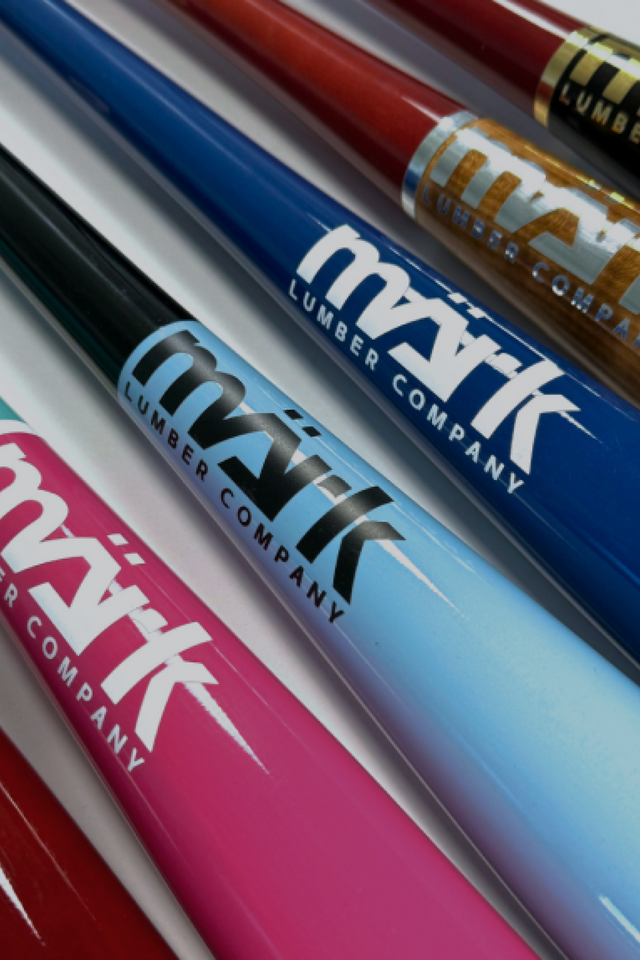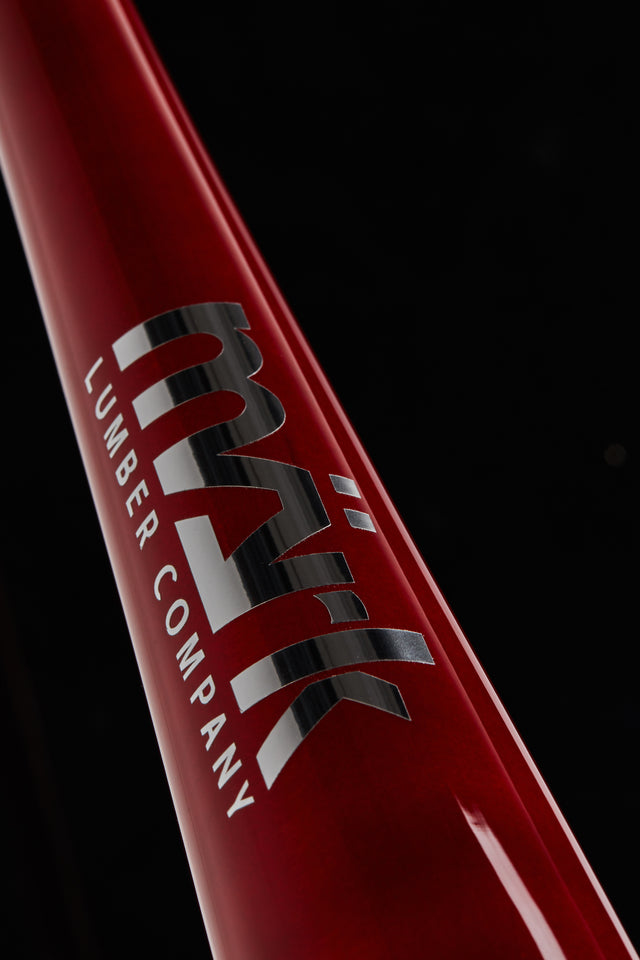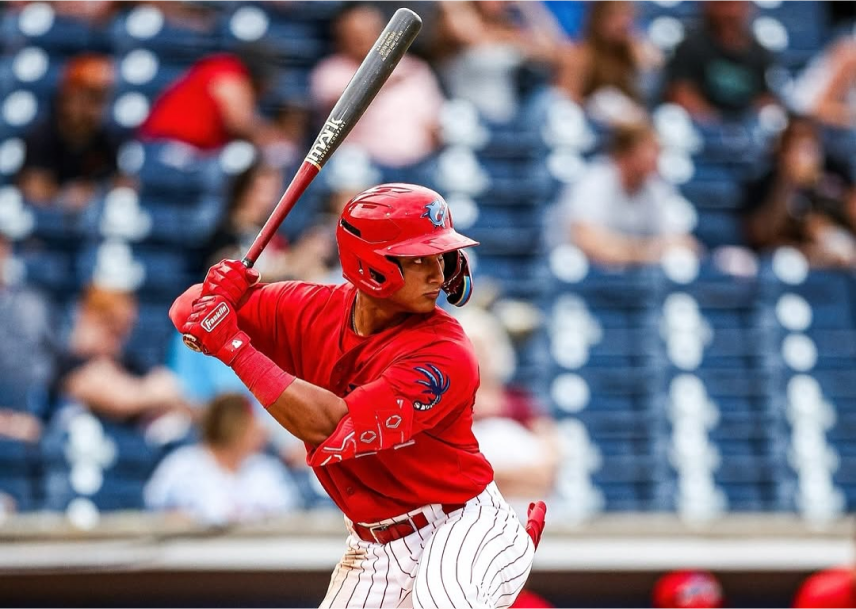
Fastpitch vs Slowpitch Softball Guide — What’s the Difference?
Introduction
Softball might look like baseball’s cousin, but once you dive deeper, you’ll quickly realize there’s more than one version of the game — and the differences can completely change how it’s played.
If you’ve ever wondered what separates fastpitch vs slowpitch softball, you’re not alone. From pitching speed and bat design to league rules and field strategy, the two formats demand distinct skill sets and equipment. Yet both share the same spirit: teamwork, power, and precision.
In this guide, we’ll explore how fastpitch and slowpitch softball differ, explain how each game is played, compare their bats, and answer common questions like ‘Can you use a fastpitch bat for slowpitch?’
By the end, you’ll know exactly which version suits your style — and how to pick the perfect bat to elevate your game.
What Is Fastpitch Softball?
Fastpitch softball is the more competitive, high-speed version of the sport. It’s the format used in college athletics, the Olympics, and professional leagues like the National Pro Fastpitch (NPF).
Pitching Mechanics
-
The ball is delivered with a windmill motion, starting from the hip and rotating 360° before release.
-
Speeds reach 60–75 mph for elite pitchers — equivalent to a 90+ mph baseball pitch when factoring in distance.
-
Pitchers rely on movement, spins, and speed to challenge hitters.
Gameplay Characteristics
-
Base running is aggressive — players can steal bases, bunt, and use hit-and-run strategies.
-
Defence reacts quickly due to smaller field dimensions (60-ft bases, 43-ft mound).
-
Games tend to be lower-scoring, relying on precision pitching and strategic offense.
Equipment Notes
-
Fastpitch bats are lighter and more balanced for quick swing control.
-
Bat length typically ranges from 30–34 inches with drop weights between -8 to -13.
-
Bats are designed to generate bat speed rather than sheer mass.
Fastpitch softball rewards reaction time, discipline, and technical mastery. It’s fast, dynamic, and requires players to think two steps ahead every pitch.
What Is Slow-Pitch Softball?
If fastpitch is a chess match, slowpitch is a social, power-driven showcase. It’s the version most adult recreational leagues play and one of the most inclusive team sports around.
Pitching Mechanics
-
Pitches are thrown underhand in a high arc between 6 and 12 feet.
-
Speeds average 25–35 mph, focusing on placement, not deception.
-
Because of the slower pitch, hitting becomes the star of the show.
Gameplay Characteristics
-
Every player gets a chance to hit — strikeouts are rare.
-
Fields are often the same size as fastpitch, but gameplay is offense-heavy.
-
Teams may hit 10+ home runs per game in competitive leagues.
Equipment Notes
-
Slowpitch bats are heavier —often 26–30 oz —and designed for power.
-
The drop weight is lower (-4 to 8), and barrels are thicker.
-
Many leagues use soft compression balls to limit flight distance and improve safety.
So, what is slow-pitch softball? It’s the version for players who love consistent contact, big hits, and a relaxed yet competitive atmosphere.
Fastpitch vs Slowpitch Softball: The Main Differences
To understand the differences between fastpitch and slowpitch softball, it helps to see them side by side.
|
Aspect |
Fastpitch Softball |
Slowpitch Softball |
|
Pitch Type |
Windmill, underhand with full rotation |
Underhand with 6–12 ft arc |
|
Pitch Speed |
60–75 mph |
25–35 mph |
|
Field Size |
43 ft mound, 60 ft bases |
50 ft mound, 65 ft bases (varies) |
|
Offence Strategy |
Small ball: bunting, stealing, slap hits |
Power hitting, long balls |
|
Bat Weight & Balance |
Lighter, balanced (-8 to -13) |
Heavier, end-loaded (-4 to -8) |
|
Ball Type |
Harder, higher compression |
Softer, lower compression |
|
Player Focus |
Speed & technique |
Strength & timing |
While both share softball’s DNA, the rhythm of each game feels entirely different. Fastpitch is about reaction and finesse; slowpitch rewards timing and power.
Difference Between Fastpitch and Slowpitch Bats
One of the most significant sources of confusion for new players is understanding how fastpitch vs slowpitch bats differ — and why using the wrong one can hurt performance (and even violate league rules).
Barrel Design
-
Fastpitch bats have smaller barrels (2¼ inches) for precision and swing speed.
-
Slowpitch bats feature larger barrels (2 3⁄4 inches) to maximize power and hitting surface.
Weight & Drop
-
Fastpitch models use lighter drop weights (-8 to -13), ideal for quicker reaction time.
-
Slowpitch bats are heavier (-4 to 8), producing higher exit velocity when hit squarely.
Flex and Material
-
Fastpitch bats often use composite materials optimized for flex and whip.
-
Slowpitch bats may be stiffer, built to handle lower-speed impacts with larger sweet spots.
Performance Intent
-
Fastpitch = control, bat speed, and spin.
-
Slowpitch = momentum, distance, and durability.
These engineering differences make it crucial to match the bat to the format you play. Even a slight shift in balance can drastically affect your timing.
Can You Use a Fastpitch Bat for Slowpitch Softball?
Technically, yes — but it’s not recommended. While you can use a fastpitch bat in slowpitch softball, the design simply isn’t built for that style of play.
Why It Matters
-
Barrel mismatch: A fastpitch bat’s thinner barrel limits contact area and may dent or crack when hit with the softer, heavier slowpitch ball.
-
Weight imbalance: The lighter swing weight of a fastpitch bat won’t generate the same momentum as a properly weighted slowpitch model.
-
Rule compliance: Many slowpitch leagues require bats approved by associations such as USA Softball, USSSA, or NSA — fastpitch models may not carry the needed certification stamps.
-
Durability: Using the wrong bat dramatically shortens its lifespan.
If you occasionally switch between the two games, invest in one bat for each format. That ensures you meet regulations and get the best possible performance.
We understand how barrel shape, balance, and material affect swing mechanics — the same principles apply whether you’re swinging a softball bat or a handcrafted wood baseball bat. The proper construction for the right purpose always yields better results.
Strategy and Skill Differences on the Field
The difference between fastpitch and slowpitch softball goes beyond equipment — it changes how players approach every aspect of the game.
In Fastpitch
-
Pitchers dominate. Movement pitches like riseballs and dropballs keep hitters guessing.
-
Defence is reactive. Quick glove work and short throws define success.
-
Offence is tactical. Bunts, steals, and squeeze plays create pressure.
In Slowpitch
-
Hitters dominate. Almost every batter can reach the outfield fence.
-
Pitchers focus on placement, not velocity.
-
Fielders rely on positioning, anticipating launch angles.
-
Team chemistry matters. A strong lineup rotation often outweighs pitching prowess.
Both versions demand skill, just in different forms. Fastpitch requires split-second reactions; slowpitch rewards consistent mechanics and smart power.
Gear and Safety Considerations
While fastpitch and slowpitch share fundamental safety rules, gear is specifically adapted to each game’s tempo.
Protective Equipment
-
Fastpitch: Players often wear face masks, chest protectors, and knee guards — especially pitchers and infielders.
-
Slowpitch: Less protective gear is used, but batting helmets remain mandatory. Some leagues now recommend infield masks due to increasing hitting power.
Balls and Compression
-
Fastpitch balls are harder (375–400 psi) and react sharply off the bat.
-
Slowpitch balls are softer (275–325 psi) to reduce speed and improve playability.
Footwear and Fielding Gear
-
Fastpitch cleats focus on traction for sprinting and sliding.
-
Slowpitch shoes prioritise comfort for longer recreational games.
Even subtle choices — such as glove pocket depth or bat grip texture — affect comfort and performance between the two formats.
Choosing Your Softball Bat: Expert Tips
When comparing fastpitch vs slowpitch softball bats, consider the following checklist:
-
League Certification – Look for USSSA, ASA/USA, or NSA stamps appropriate to your league.
-
Length-to-Weight Ratio – Match your strength level and swing type to the correct drop weight.
-
Barrel Size & Sweet Spot – Choose larger barrels for power (slowpitch) or smaller for control (fastpitch).
-
Material Composition – Composite bats provide flex; alloy bats offer stiffness; wood delivers pure feedback.
-
Grip & Feel – Comfort reduces fatigue and improves timing.
If you value authenticity and craftsmanship, learn from the traditions of baseball bat making — where every gram, grain, and finish matters. That philosophy defines Mark Lumber’s approach to premium performance tools.
Mark Lumber: Precision Craftsmanship Behind Every Swing
Whether you play fastpitch or slowpitch, one truth connects all hitters — performance starts with quality craftsmanship. Every swing depends on balance, density, and feedback, and that’s where Mark Lumber’s expertise in wood baseball bats becomes invaluable.
At Mark Lumber, we believe that a bat isn’t just equipment — it’s an extension of the athlete’s skill. Our hard maple and yellow birch bats are handcrafted in Quebec using hand-split billets with perfect grain alignment for optimal strength and feel. That same attention to precision applies across bat sports, where balance and design dictate swing efficiency, power transfer, and player confidence.
When you pick up a Mark Lumber bat, you’re not just choosing a piece of wood — you’re choosing heritage, experience, and performance engineered to professional standards.
Why players trust Mark Lumber:
-
Premium-grade maple and birch billets
-
Precision turning for perfect balance
-
Custom options for engraving, colour, and finish
-
45-day warranty for peace of mind
-
Designed by players, for players
Whether it’s a perfectly weighted training bat, a custom wood baseball bat, or a coach’s Fungo bat, Mark Lumber’s dedication to craftsmanship ensures you feel the difference in every swing.
Discover craftsmanship that elevates your game — Shop Mark Lumber Bats
Conclusion: Choosing the Right Game — and the Right Gear
At the heart of the fastpitch vs slowpitch softball debate lies more than rules or bat specs — it’s about understanding your rhythm as a player. Fastpitch is all about velocity, precision, and reaction; slowpitch celebrates timing, consistency, and the pure joy of contact.
The equipment, especially the bat, plays a defining role in performance. Knowing the difference between fastpitch and slowpitch bats ensures you step to the plate prepared, confident, and safe.
Just as softball players fine-tune their technique for their format, Mark Lumber perfects every detail of its wood baseball bats — from balance point to barrel contour — ensuring peak performance, whether you’re coaching, training, or competing.
So before your next swing, ask yourself: Are you equipped for your game’s rhythm? Because when the bat matches your style, everything — from contact to confidence — clicks into place.
FAQs
1. What is the main difference between fastpitch and slowpitch softball?
The main difference between fastpitch and slowpitch softball lies in how the ball is delivered, how quickly the game moves, and the type of equipment used.
In fastpitch, pitchers use a full windmill motion, releasing the ball at 60 – 75 mph from a 43-foot mound. The ball explodes out of the hand on a flat trajectory, forcing batters to rely on split-second timing and compact swings. Offence is strategic — bunting, stealing, and slap-hitting are essential.
In contrast, slowpitch softball features an underhand pitch thrown in a 6 – 12-foot arc at roughly 25 – 35 mph. The slower delivery gives hitters time to load and drive, making power hitting the defining feature. Bats are heavier and end-loaded, while fielders play deeper to handle towering fly balls.
Understanding the difference between fastpitch and slowpitch softball helps players choose the right bat weight, swing approach, and league. Fastpitch rewards precision and reaction; slowpitch rewards timing and consistency — two sides of the same diamond.
2. Can you use a fastpitch bat for slowpitch softball games?
Many players ask, “Can you use a fastpitch bat for slowpitch?” Technically, you can, but it’s not advisable.
Fastpitch bats are engineered for high-speed pitches and smaller, harder softballs. They feature lighter drop weights (-8 to -13) and narrow 2 1⁄4-inch barrels that optimise bat speed, not momentum. When used in slowpitch, a fastpitch bat’s thinner walls face repeated impact from softer, heavier balls. This mismatch often leads to cracks, dents, or reduced trampoline effect.
Conversely, slowpitch bats have thicker 2¾-inch barrels and heavier builds (-4 to -8 drop) designed to generate power against slower pitches. They also carry association stamps (USSSA, USA Softball, NSA) required for league play.
If you switch between the two formats, invest in one bat for each. That ensures consistent performance and prevents disqualification for using an unapproved bat. Whether it’s choosing the right softball model or a handcrafted wood baseball bat for training, understanding design intent — speed versus mass — constantly improves your swing efficiency.
3. Why are fastpitch softball bats lighter than slowpitch bats?
Fastpitch bats are lighter because swing speed is everything in high-velocity gameplay. When a pitch approaches at 70 mph, a player has less than four-tenths of a second to recognise the ball and react. A lighter bat — usually in the -8 to -13 drop range — allows hitters to accelerate quickly through the hitting zone, generating exit speed through momentum rather than raw weight.
Slowpitch, on the other hand, involves pitches in the 25 – 35 mph range. Since there’s more reaction time, batters rely on mass to drive the ball. That’s why slowpitch bats are heavier, end-loaded, and feature larger barrels. The weight translates to power and distance once contact is made.
The difference between fastpitch and slowpitch bats mirrors the contrast in pitch tempo: fastpitch needs agility; slowpitch rewards strength. Selecting the right balance ensures efficiency and reduces fatigue, helping players stay consistent through multiple innings — a principle also applied by premium bat makers like Mark Lumber, where balance and performance are engineered rather than improvised.
4. What type of player is best suited for fastpitch vs slowpitch softball?
Your personality and playing style often determine whether fastpitch or slowpitch softball suits you best.
If you’re driven by competition, strategy, and rapid decision-making, fastpitch is your game. It favours athletes who value speed, precision, and technique. Pitchers, middle infielders, and slap-hitters thrive here because every millisecond counts.
In contrast, slowpitch softball caters to players who enjoy teamwork, rhythm, and consistent offensive action. Power hitters who can read pitch arcs and time their swing excel in this version. Recreational leagues often feature co-ed teams, creating a more social environment without sacrificing intensity.
Both require coordination and bat control, but the difference between fastpitch and slowpitch softball comes down to pace and emphasis: quick-thinking finesse versus measured power.
Ultimately, the best format is the one that complements your strengths — whether that’s lightning-fast reflexes or the satisfaction of launching a ball into the gap. And no matter your choice, proper bat selection is key to unlocking full potential.
5. How do fastpitch and slowpitch softball bats affect performance and safety?
The difference between fastpitch and slowpitch bats goes beyond weight — it influences both performance and safety.
In fastpitch, lighter composite bats allow players to control their swing at high speeds, ensuring more precise contact. These bats reduce vibration on mishits and help maintain accuracy on compact swings. Because balls leave the bat faster, fielders wear more protective gear, especially pitchers and corner infielders.
Slowpitch bats, designed for recreational and competitive leagues, emphasise power over speed. Their heavier weight and thicker walls create stronger impact energy, but with lower exit velocity than fastpitch due to the softer ball. This balance keeps the game safer, even with close infield positions.
Choosing the wrong bat type can compromise both performance and safety. A fastpitch bat may crack under slowpitch stress, while an overly heavy slowpitch bat could strain wrists or slow reaction time. Understanding how fastpitch vs slowpitch softball gear interacts with ball compression and swing mechanics protects players — and enhances every hit from first pitch to final inning.






